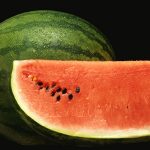(HealthDay News) — The foods you eat and drink during childhood will impact the strength of your bones as you age, the Nemours Foundation says. Most of your bone density stems from what you eat and drink as children and teens, says Nemours, which notes the process is virtually finished when a person reaches age 20. As adults, people continue to repair and replace bone, but at a much slower rate. Over time, the foundation says, bones become weaker and are more apt to break. Nemours suggests how to build stronger bones among your kids: Ensure that children eat foods high in calcium. Give kids a vitamin D supplement, which helps the body absorb calcium. Encourage your children to get plenty of exercise.
All Eats:
Baby Steps Head Off a Fussy Eater

Getting kids to try new foods can become a daily showdown. One promising approach: expose babies early on to varied tastes and textures. Researchers in Brisbane, Australia, found that food experiences when just 14 months old can influence the eating habits that children will exhibit at age 3. And introducing a variety of fruits and vegetables and other types of foods early on is key to a better diet quality later on. The result: A child who eats more than just chicken fingers and cheese sticks. For the purpose of the study, the children were exposed to 55 different food items. The researchers found that having a great number of vegetables, fruits and other foods at age 14 months predicted more varied food preferences, higher food intake and less fussiness when the children’s eating habits were re-evaluated at 3.7 years of age. Babies can start eating solid food at about 6 months. Once they reach this milestone, don’t hesitate to offer a wide variety of healthy foods in a variety of textures. Ask your pediatrician for guidelines if you’re unsure of the best foods or how to prepare them. Your baby may already show a preference for one or two foods, but don’t let his or her responses deter you — keep introducing others. According to the American Academy of Pediatrics, it can take up… read on >
Fiber: It’s Not Just for Adults

You know how important fiber is for overall health, making meals more filling and staying “regular.” But did you know that children need their fair share of fiber, too? And for the same reasons. How much is enough? In general, the U.S. Institute of Medicine states that monitoring fiber intake should start early in life, and by their teen years, kids need nearly as much fiber as adults. Grams of Fiber by Age: Ages 1-3: 19 g. Ages 4-8: 25 g. Ages 9-13: 26 g for girls, 31 g for boys. Ages 14-18: 26 g for girls, 38 g for boys. The American Academy of Pediatrics says to remember the number 5 — make sure kids eat at least 5 servings of fruits and vegetables each day plus other good sources of fiber, like whole grains. The nutrition facts panel on packaged foods can help you make fiber-rich choices. If a food claims to be a good source of fiber, the fiber grams will be listed under carbohydrates. “Excellent” sources have 5 or more grams of fiber per serving. “Good” sources have at least 3 grams. While whole grains make healthier choices than refined ones, some have more fiber than others. For instance, whole-grain wheat has more than whole-grain brown rice or oats. Also, the amount of fiber in the same grain can vary by… read on >
Here’s How the Government Shutdown Could Affect Your Health

Tainted food, trash-filled parklands and even hungry kids: Public health could be increasingly at risk as the U.S. government shutdown drags into its 21st day, experts say. Crucial inspections intended to protect Americans have either been curtailed or are not being performed because the responsible federal workers have been furloughed, said Dr. Georges Benjamin, executive director of the American Public Health Association. “We have a very refined regulatory process which protects people from known and unknown hazards,” Benjamin said. These inspections are designed to protect people against threats like tainted drugs, foodborne illnesses and water contamination, he explained. “Even though we have a system that’s pretty good, things fall through,” Benjamin said, noting the frequency of drug recalls, foodborne disease outbreaks and polluted drinking water. “And that’s when we’re running on all cylinders, everyone’s funded, everyone’s at work,” he added. Large sections of the government have been shut down since late last month. President Donald Trump is insisting on government funding of more than $5 billion to start building a wall along the U.S.-Mexico border; Democrats have refused to fork over the money. Congress already has passed five of its major appropriations bills, which fund about three-quarters of the government. The shutdown hasn’t affected the U.S. Department of Health and Human Services, the U.S. Centers for Disease Control and Prevention and the Department of Veterans… read on >
More Proof High-Fiber Diets Help Prevent Cancers, Heart Disease

A large, new analysis helps confirm that eating lots of grains, vegetables and fruit lowers your risk of dying early from cancer or heart disease. When compared with those who consume very little fiber, people at the high end of the fiber-eating spectrum saw their risk for dying from heart disease, stroke, type 2 diabetes and/or colon cancer plummet by 16 to 24 percent, investigators reported. The team also concluded that more is definitely more: For every additional 8 grams of dietary fiber a person consumes, the risk for each of those illnesses was found to fall by another 5 to 27 percent. “The health benefits of fiber are supported by over 100 years of research into its chemistry, physical properties, physiology and effects on metabolism,” said study author Andrew Reynolds, a postdoctoral research fellow at the University of Otago in New Zealand. “What really surprised us was the range of conditions that higher intakes of dietary fiber seemed to improve,” Reynolds added. “Heart disease, type 2 diabetes and [colon] cancers are some of the most detrimental diseases of our time.” The conclusions follow a deep-dive into the results of 185 observational studies conducted over the last four decades, alongside the findings of another 58 clinical trials involving more than 4,600 participants. Reynolds and his colleagues reported their work, which was commissioned by the World… read on >
When Calorie Counts Aren’t on the Menu

Over the past few decades, the amount of food Americans eat away from home has increased from 18 percent to 33 percent. At the same time, restaurant meals with oversized portions have become a major contributor to the nation’s obesity epidemic. While much of the blame has been aimed at fast-food places, these aren’t the only restaurants to supersize portions. A study done at Tufts University found that meals from non-chain restaurants averaged 1,200 calories, about the same as offerings from the large chains. And meals from three of the most popular cuisines — American, Italian and Chinese — tallied even higher, close to 1,500 calories. With 92 percent of restaurant meals delivering more calories than needed in one sitting, it’s pretty easy to gain weight. Half of all U.S. restaurants are individual establishments or part of a chain small enough to be exempt from having to provide nutritional information — such as calorie counts — so you’re on your own for making careful choices. Here are steps you can take. First, watch out for the freebies, such as any tasty bites from the chef presented as you sit down, as well as a bottomless bread basket. Dipping bread in olive oil rather than spreading on butter cuts out saturated fat, but not calories, so skip it if you want to spend those calories elsewhere.… read on >
Health Tip: Nutritional Needs for Your Your Teen
(HealthDay News) — Teens typically have a significant increase in appetite around the age of 10 in girls and 12 in boys, the American Academy of Pediatrics says. During adolescence, boys require an average of 2,800 calories per day and girls an average of 2,200 calories per day. Hunger typically starts to subside once teens stop growing, the academy adds. But taller teens and those who play sports may require more calories into late adolescense, the doctor’s group says.
Get Smart About Storing Seafood

With concerns about overfishing, it’s shocking to learn that 40 percent of the edible U.S. seafood supply is lost or wasted every year — and half of that is by consumers. That’s not only money down the drain, but also a loss of valuable nutrients like protein and omega-3 fatty acids. To cut waste, calculate the amount of fish you really need before shopping based on the recipe you’ll be following and portion sizes. It will also help to have a plan for any leftovers, such as a brown bag lunch the next day. Be sure the seafood is fresh when you buy it. At the store, it should be refrigerated or displayed on ice in a case or under a cover. Fish should smell like the sea, not fishy or ammonia-like — those are signs of spoilage in raw or cooked fish. Seafood shopping tips: The eyes of whole fish should be clear and bulge slightly. Flesh should be shiny, not slimy, and spring back when pressed. Shrimp flesh should be translucent. Consider buying frozen seafood, like bags of shrimp, which can be economical and used as needed. At home, store fresh seafood properly so it won’t spoil before you can eat it. If you’ll cook it within two days, you can put it in the fridge, optimally on ice. Otherwise, wrap it tightly… read on >
A Better Way to Look at Food

A “low-energy-dense food diet” sounds like just another weight loss fad, but it’s an approach with decades of research behind it. The concept is simple: Eat more foods with a higher water content to get more volume for fewer calories. Energy density is simply the amount of energy — or calories — in a gram of a food. Foods can be very low-, low-, medium- or high-energy density. Butter, for instance, is a high-density food with 180 calories in 20 grams. Watermelon is very low, with just 7 calories in 20 grams. Portion size is another way to see the difference. For example, one and a half juicy oranges have the same number of calories as a mere three pretzel rods. To find a food’s energy density, divide the number of calories in a serving by the number of grams in that serving. Energy density ranges in the very low category are from 0.5 to 1 calorie/gram. As you move to the high end, it’s from 4 to 9 calories per gram. You can easily calculate the energy density of any food. Use a calorie counter to do the math for fresh foods. For packaged ones, use the Nutrition Facts Panel and divide the calories by the grams in a portion. Low-energy density foods are usually high in fiber as well as water, so they’re… read on >
Ways to Eat Well Without Breaking the Bank

Is your budget at odds with your desire to eat healthy? Seafood, lean cuts of meat and fresh produce can be pricey, but there are many foods that let you stretch your shopping dollars. At about 15 cents each, protein-rich eggs are a great buy. Scrambled for breakfast, baked into a frittata for dinner and hard boiled as a snack on the run, eggs can fit into any meal. If watching calories, eat twice the number of whites as yolks. For pennies a serving, plain oatmeal, especially the steel-cut variety, offers a wealth of benefits. It’s high in the type of soluble fiber that helps remove cholesterol from your bloodstream, lowers your risk for heart disease and keeps you regular. When it comes to canned veggies, whole tomatoes top the list. Because they’re cooked, they have more of the antioxidant lycopene. They can be quickly heated with herbs for a side dish or pureed into a sauce. Look for whole peeled tomatoes, often less processed during canning, and chop them yourself. Just avoid brands with a lot of added salt. Compared to beef, chicken is a great protein value, especially if you buy on sale, whether whole or parts. While skinless and boneless breasts are convenient, they’re more expensive. You can easily pull the skin off whole chicken breasts before cooking. And using bone-in pieces… read on >




















-300x200.jpg)







-300x169.jpg)
